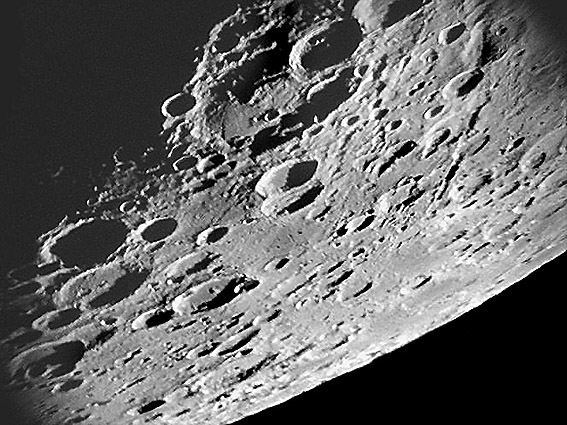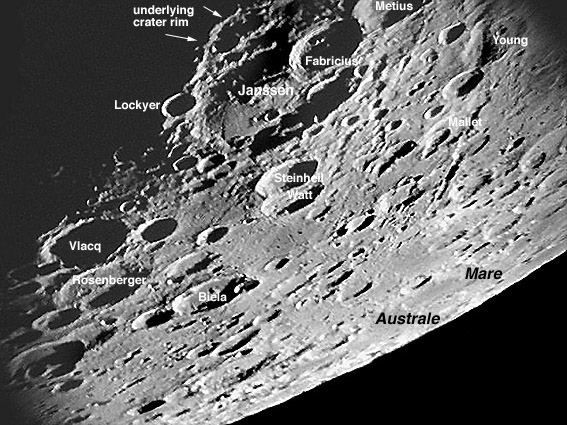Difference between revisions of "June 19, 2004"
| Line 49: | Line 49: | ||
<!-- Cleanup of credits --> | <!-- Cleanup of credits --> | ||
<p> </p> | <p> </p> | ||
| − | + | {{wiki/ArticleFooter}} | |
| − | |||
| − | |||
| − | |||
| − | |||
| − | |||
| − | |||
| − | |||
| − | |||
| − | |||
| − | |||
| − | |||
Revision as of 18:59, 1 February 2015
Janssen
Image Credit: Wes Higgins |
|
Janssen South of the Nectaris Basin the Moon has a sameness of flat-floored craters that makes identification of particular features difficult. One crater stands out as unique in this area of uniformity. Janssen is huge (190 km diameter) and weird. First, its northern end is confused by an overlapping crater, Fabricus, and an "underlapping" one (marked on the mouse-over image) that has no designation. When seen from directly above the northern rim of Janssen is clearly the ridge that arcs into Fabricus. The center of Janssen includes a broad, rough-textured mound of material that the US Geologic Survey named the Janssen Formation - it is ejecta from the formation of the Nectaris impact basin. Thus, the crater Janssen is pre-Nectarian in stratigraphic age - that is the oldest age group on the Moon. The southern portion of Janssen's floor contains smooth material which a rille arcs through. I am always thrilled when I visually observe this famous, 140 km long rille because it doesn't belong there. Most rilles occur on maria lavas, but the Janssen patch of smoothness is not dark at full Moon and doesn't have the spectral properties of maria. Is this material some sort of unknown highland volcanism? Also note the various linear valleys that are radial to Nectaris - more scars of its birth. Technical Details: Related Links: Yesterday's LPOD: Frigid Buddies: Aristoteles and Eudoxus Tomorrow's LPOD: Discover the Moon |
Author & Editor:
COMMENTS?Register, Log in, and join in the comments.
|





